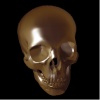Hi,
I'm trying to make sure I'm calling create, testcooperativelevel, reset and release on my d3d device, from the main thread (same one as the window messages are handled). I'm not sure I understand the definition of a thread, I believe I only have one thread. Here's a bit of my code to give you a better view.
I'm doing the following calls to create, reset, release and testcooperative level:
Create => part of private function in d3d class, class includes mHwnd and d3ddev vars
Reset => part of private function 'ResetDevice' in d3d class, triggered from winproc of d3d window/hwnd
TestCooperativelevel => both from the winproc handler of d3d window/hwnd as within several member functions of d3d class
(also from main program loop, through 'CheckDevice' function, member of d3d class)
Release => in the destructor of my d3d class, in which d3ddev is a public member
CD3d _d3d; // object of own d3d wrapper/class including mHwnd and md3ddev membersint WINAPI WinMain(HINSTANCE hInstance, HINSTANCE hPrevInstance, LPSTR lpCmdLine, int nCmdShow){ _d3d.CreateWindow(); _d3d.InitD3ddevice(); // load scene etc. PeekMessage(&msg, NULL, 0, 0, PM_NOREMOVE); while(msg.message != WM_QUIT) { if(PeekMessage(&msg, NULL, 0, 0, PM_REMOVE)) { TranslateMessage(&msg); DispatchMessage(&msg); } else { if(active) { if(_d3d.CheckDevice()) { _timer.CalcFps(); SetWindowTextA(_d3d.mHwnd, _timer.mStrFramerate); // render 3d scene if(!_d3d.RenderFrame(&_d3dscene, &_d3dcam)) { MessageBox(_d3d.mHwnd, err_render.c_str(), err_windowtext.c_str(), MB_ICONERROR); return (INT)msg.wParam; } } } } } return (INT)msg.wParam;}// windowproc, which is linked to the mHwnd in the _d3d objectLRESULT CALLBACK WindowProc(HWND hWnd, UINT message, WPARAM wParam, LPARAM lParam){ int sleeptime = 20; switch(message) { case WM_ACTIVATE: if(LOWORD(wParam) == WA_ACTIVE || WA_CLICKACTIVE) { active = true; Sleep(sleeptime); break; } else active = false; Sleep(sleeptime); break; break; case WM_ACTIVATEAPP: if(!wParam) { active = false; Sleep(sleeptime); } if(wParam) { if(_d3d.mD3ddev) { if(!_d3d.CheckDevice()) { { while(1) { Sleep(sleeptime); switch (_d3d.mD3ddev->TestCooperativeLevel()) { case D3D_OK: return 0; case D3DERR_DEVICELOST: break; case D3DERR_DEVICENOTRESET: { _d3d.OnLostDevice(); _d3dscene.OnLostDevice(); if(!_d3d.ResetDevice()) break; else { _d3d.OnResetDevice(&_d3dscene, &_d3dcam); _d3dscene.OnResetDevice(&_scene, &_d3d.mD3ddev); } active = true; break; } case D3DERR_DRIVERINTERNALERROR: PostQuitMessage(WM_QUIT); } } } } } else active = true; Sleep(sleeptime); } break; case WM_DESTROY: PostQuitMessage(WM_QUIT); break; default: return DefWindowProc(hWnd, message, wParam, lParam); } return 0;}Does anyone know if I'm using just one thread and if I follow the MSDN statement that the d3d device calls are executed from the main thread?
(or can I only call Create, Reset, Testcooperativelevel, Release from the Wndproc function of the d3d window?)






